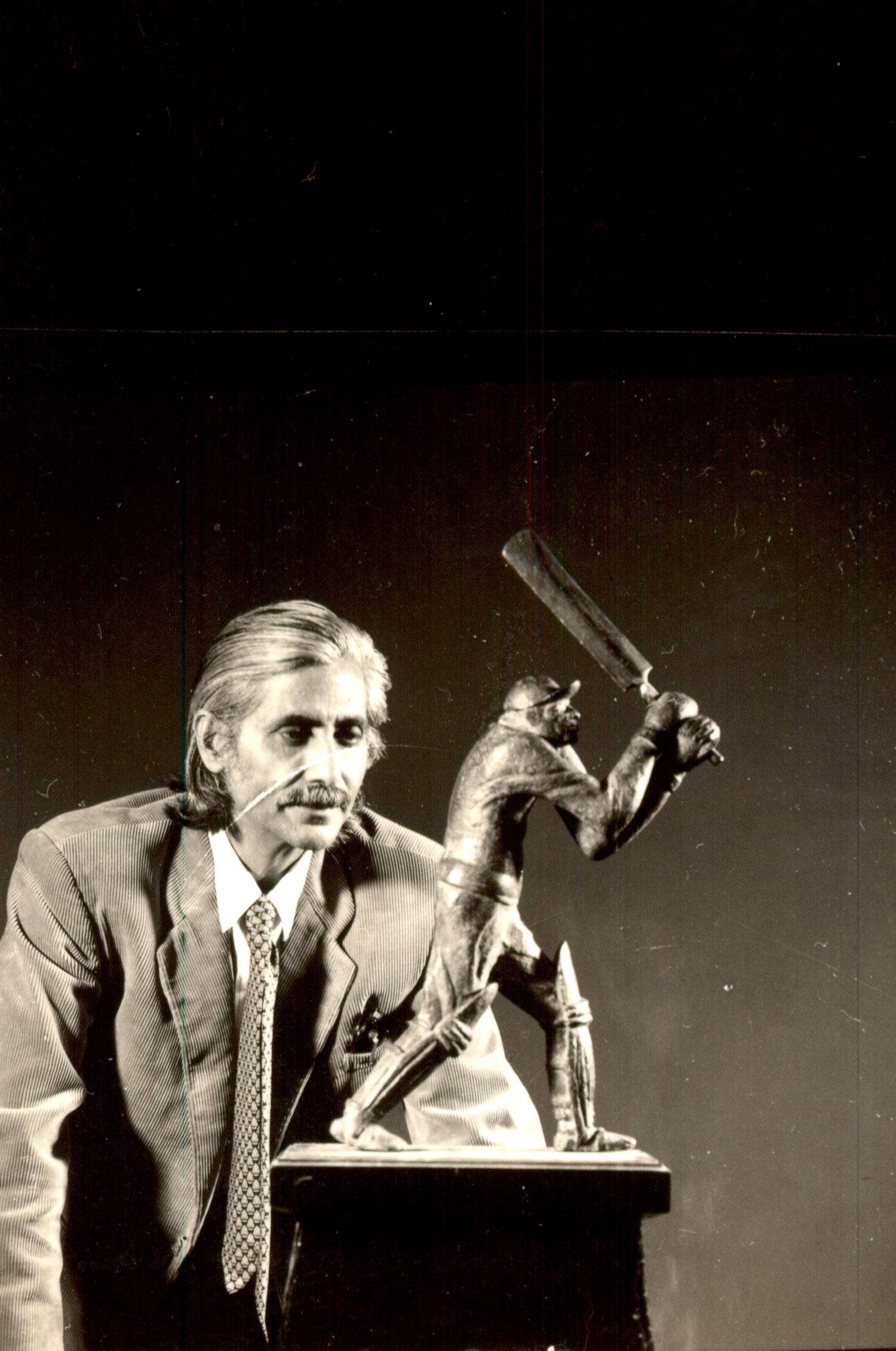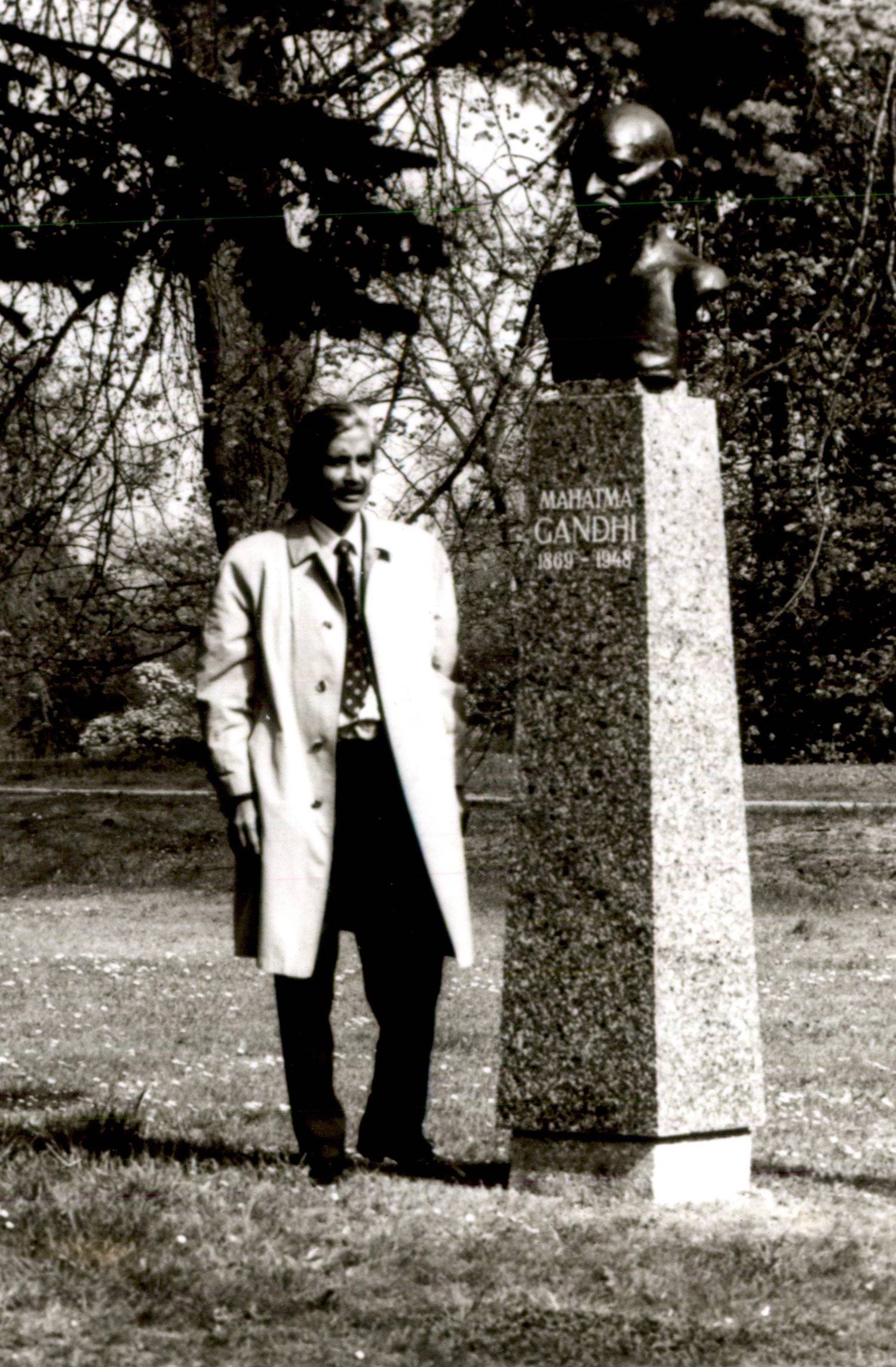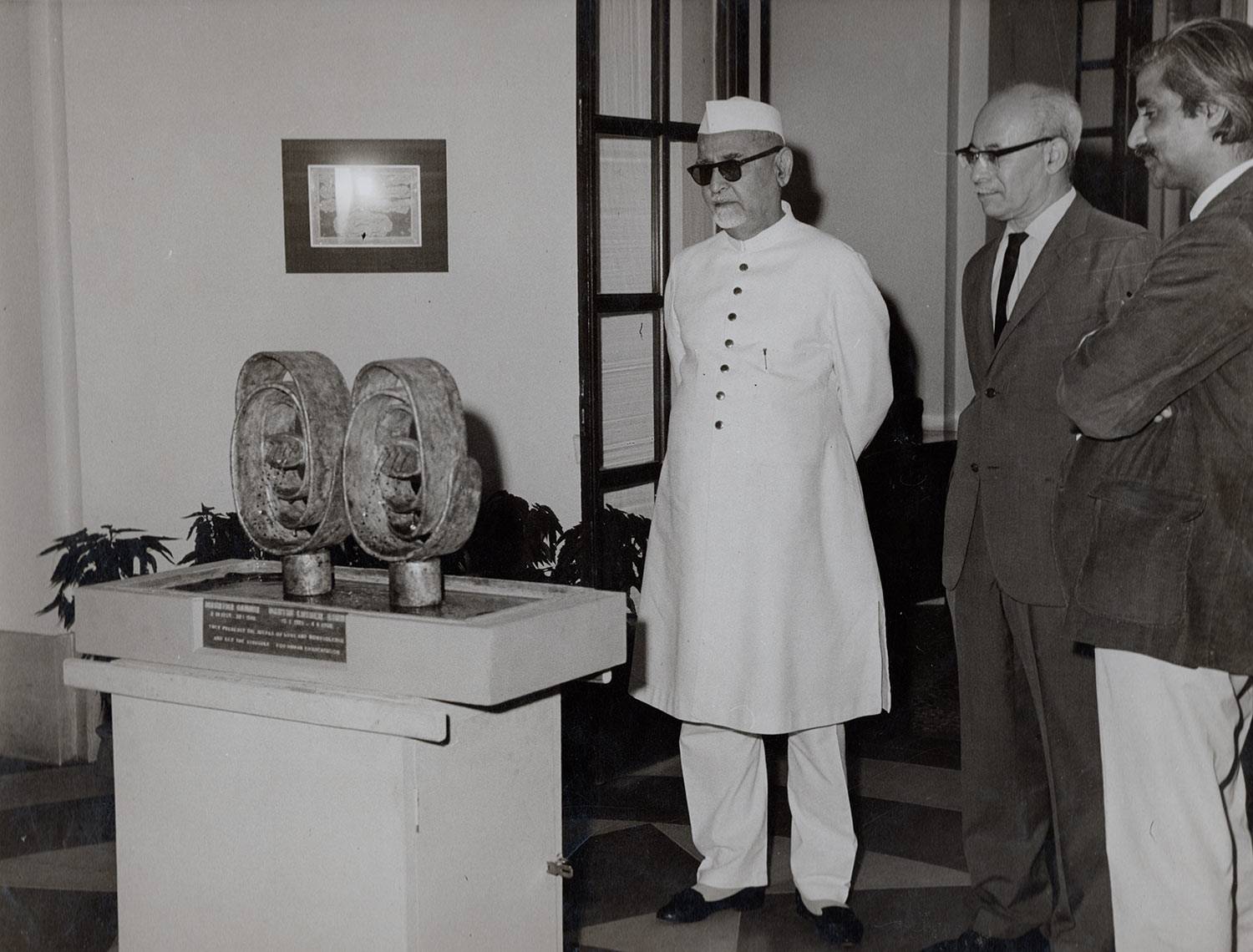Iconic
Sculptures
Amar Nath Sehgal’s oeuvre has been critiqued scarcely for the expansive geographical reach. He travelled extensively in Europe and America to exhibit his works which reaped admirers from all over the world. That said, his artistic style was a unique blend of cubist, expressionist, surrealist and abstract styles of which he’s been often compared to Giacometti and Ernst.
Amongst his admirers were Jimmy carter who personally received his sculpture at the white House, Indira Gandhi, members of the UN Secretary General Javier Perez de Cuellar and Kofi Annan, James Grant, Jean Cassou, Curator Museum of Modern Art, Paris and Andre Malraux, French writer to name a few. He was universally accepted for the theme of his art centred around social justice and human dignity.

Unveiled at the 2nd World Population Conference, Mexico in 1984 by Rafael M Salas, UN Secretary, International Conference on Population. A replica was later placed at the UN headquarters in New York and NGMA, New Delhi. In 1985, he was presented with the United Nations Peace Medal in appreciation for his work on population explosion.

To Space Unknown
Monument to Love and Non-Violence is an intricately engineered sculpture dedicated to the ideals of Mahatma Gandhi and Dr. Martin Luther King. The flow of water is incessant and timeless as are the ideals for which they lived and died. The silent soft trickling denotes the sympathy, pain, and happiness which these two men shared with humanity. Sehgal’s message through this dedication has been for the water to keep flowing until the world is enlightened.
“The basis of all my work lie in the unconscious. It is symbolic of themes and emotions dormant within my own system. These come to the surface only with great concentration. And it is ultimately the artistic imagination which gives shape to the feelings.”
– Amar Nath Sehgal
The sculpture was acquired by Thomas Bata, a Czech entrepreneur who went on to become the most famous shoe maker. Today the sculpture has been acquired by a private collector.
The Captive
The concept was conceived on paper first in 1961 by the artist as a response to the conditions of prisoners held captive on the basis of their political beliefs.
This sculpture was originally designed by the artist for the opening of the UN Conference on Sanctions Against Racist South African Regime in 1986. It was made to highlight the UN’s opposition to the apartheid government and renew its appeal for the release of Nelson Mandela and other political prisoners. The sculpture was unveiled by Secretary General Javier de Cuellar and Amadou Mahtar M’Bow former Director General of UNESCO.
In 2001, the Captive was installed at Robben Island Museum, in South Africa, the prison where Nelson Mandela spent 27 years in captivity. The sculpture was presented by the High Commission of India, with the help of the Aditya Birla Foundation.













